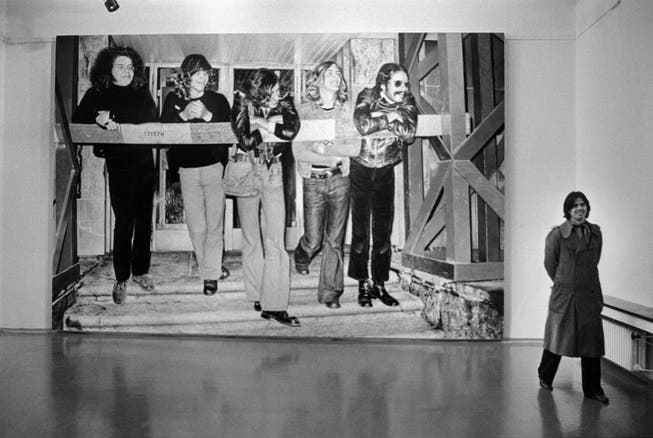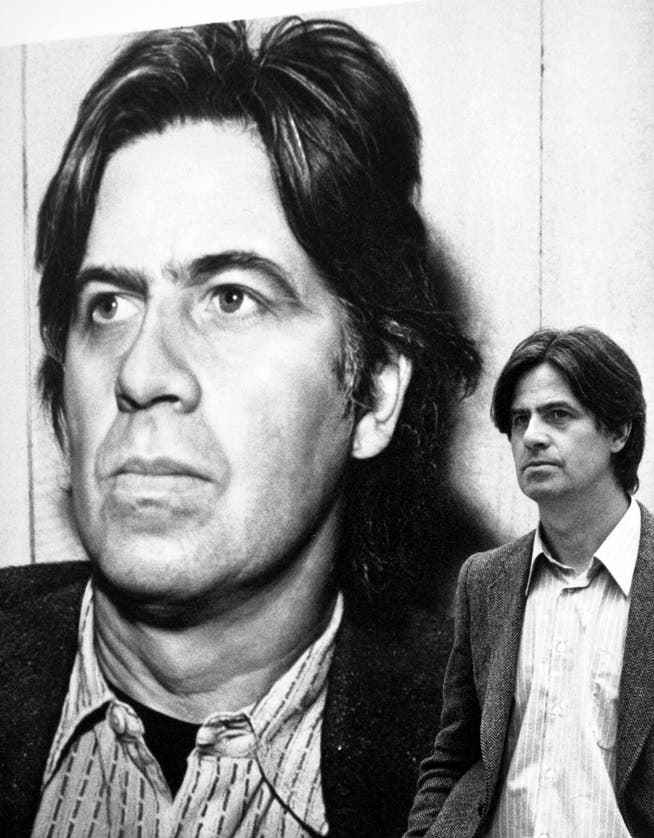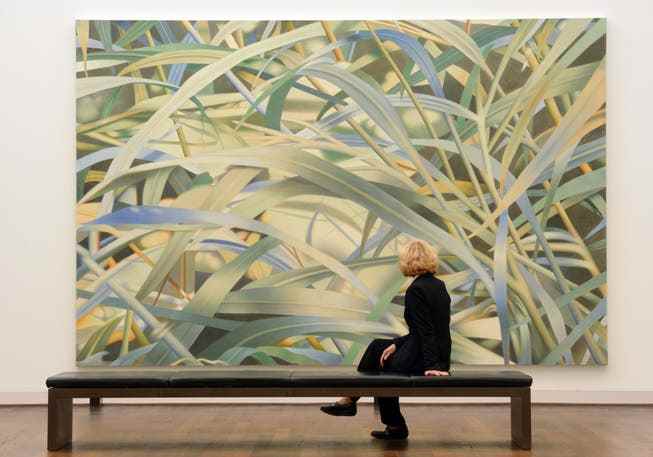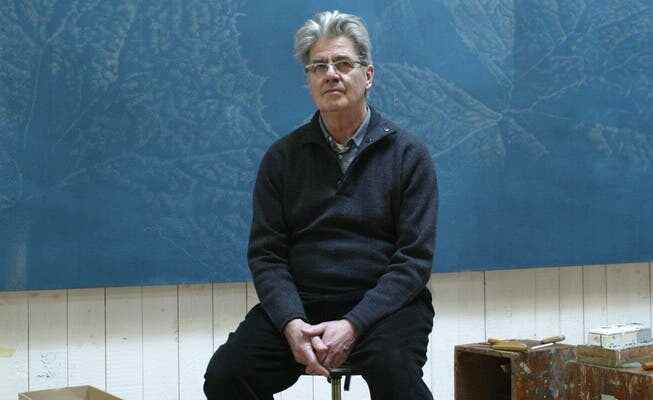Born in 1930, the artist has been developing his photorealistic painting since 1969. He died on Wednesday at the age of 92.
Franz Gertsch in 2005 in his studio in front of a butterbur painting.
Franz Gertsch was the magician among painters. He enchanted reality into its painted image when he began taking photographs in 1969. It was then as if he were learning to paint all over again through photography. Often they were snapshots. And those he photographed in secret were not always enthusiastic.
In 1978, a five-part picture cycle was created that revolved around the punk rock legend Patti Smith. In the first picture, the artist is seen from behind, crouching, with an electric guitar on a stage, she seems completely focused on the technique.
In fact, the singer wasn’t particularly amused when Gertsch snapped numerous photos during a concert at Cologne’s Veith Turske gallery. In other pictures, however, she turns to the viewer. Especially in the last quiet painting, which is based on a photograph taken during a visit by Patti Smith to Gertsch’s studio, an intense and cautiously intimate portrait emerges.
The decision was made on the mountain
Franz Gertsch’s huge photo-realistic pictures were the result of a search movement that included experiments with different modes of representation and media and culminated in the insight that it was not necessary to develop an individual signature. As Gertsch himself described it, the decision was made on the summit of Monte Lema in Ticino, when he was already 39 years old. He was practiced in the careful handling of materials, now he found his unmistakable style.
For this new beginning, in which it was not foreseeable whether Gertsch would also be successful on the art market, the artist initially used the cheapest materials, sheets and powder pigments mixed in dispersion, as well as self-made frames. He did, starting with “Huaaa . . .!», the photo-realistic painting of an officer on horseback, to «Medici» from 1971, which shows five long-haired, hip young men at a construction site for the Medici company.

Franz Gertsch: «Medici», 1971.
This picture was exhibited a year later at documenta 5, curated by Harald Szeemann, after which Gertsch was invited to New York, where he used Cotton Duck No. 10 discovered that required a much more time-consuming way of working. Even with the use of professional cameras, Gertsch’s way of working slowed down, after the initial snapping, the search for images became more and more targeted.
In 1978 Gertsch took part in the Venice Biennale. Shortly thereafter, he began his portrait series with a self-portrait and haunting images of various women, which achieved a high degree of realism and, despite their challenging size, radiate the calm and concentration that were necessary in their creation.
The art historian Götz Adriani once called this approach “provocatively deliberate”. Because there is no duplication in it, as the photographic medium has often been accused of, but a conscientious reconstruction of reality through painting. As a result, the number of works remained manageable, since Franz Gertsch sometimes needed more than a year to produce his prints and pictures.

Role model and likeness: Franz Gertsch stands next to his self-portrait in 1980.
Images made out of dots
The production of the woodcuts began in 1986, and these detailed works, unique in art history and printed on Japanese paper, often have a monumental size of up to more than 4 x 5 meters. The process of creation is complex, the original image is converted into a pattern of points of light, which Gertsch drives into the wooden panel with a gouge and which is then transformed into a fine grid structure by the pressure.
To understand Gertsch’s scrupulous way of working, one should read a carefully designed book entitled “Silvia”, which was published by Lars Müller in 1999. In this chronicle, Norberto Gramaccini describes the long road to the completion of a painting: “Just as the texture of the color is made up of myriads of painterly signs, the picture as an aesthetic unit is the sum of a multitude of individual artistic decisions.”
Gertsch, who once said that he was devoted to beauty, although neither his models were predestined for beauty pageants, nor the butterbur, which he had painted several times, pleased the gardener, found many motifs in the nature in front of his house. The insignificant was just as important to him as the striking appearances: “Every detail is equal. (. . ) The rotten black branch wants to be loved like the trunk of the young beech.” With unsentimental precision, Franz Gertsch, who worked in his studio to the very end, created an idiosyncratic and intimate work for all its monumentality. Now the painter died on December 21 at the age of 92.

